| The Hiawatha Trail, with its ten tunnels and seven high trestles, is not a trail
you'd want to bike in the winter. The snow in these rugged Bitterroot Mountains
over the Idaho and Montana border would be tough enough, even without the bears
that are rumored to hibernate in some of the tunnels. Some bears like to get started even before the biking season ends - October 2, 2005 - and the trail rangers have to scoot them out in the morning before they open the trail to riders at 8:30 in the morning. It stays open until 6:00 p.m. |
||
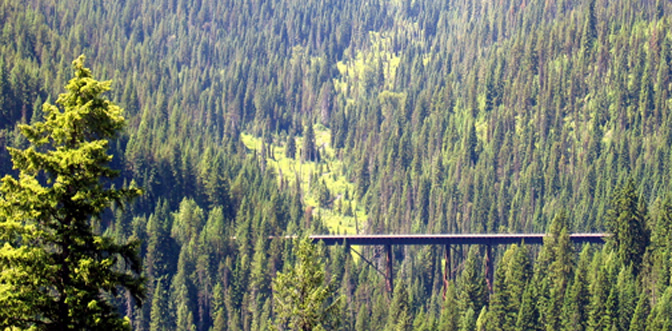 |
||
One of the Seven high trestles on the Hiawatha Trail. |
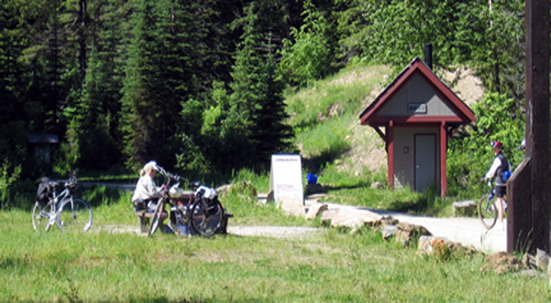 |
||
"Ticket booth" at the East Portal entrance to the Hiawatha
Trail. Trail marshalls check to see that you have a trail ticket, helmet and
light. |
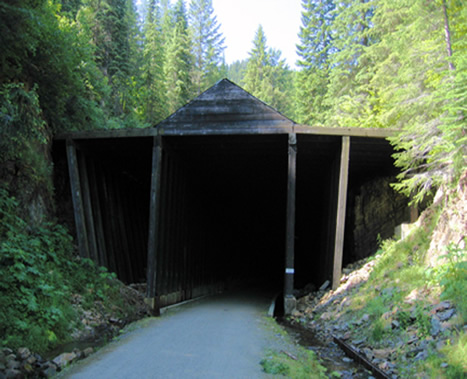 |
||
Entrance to the1.8-mile Taft Tunnel at elevation 4,160 feet.
Remove your sunglasses and turn on your headlight before entering. You wouldn't
believe how dark it is in there. And cold! It might be 80 degrees Fahrenheit
outside, but plan on half that on the INside - 40 degrees or below. That's about
the temperature of volcanic fumaroles where old-timers used to cure cheese and
store ice. |
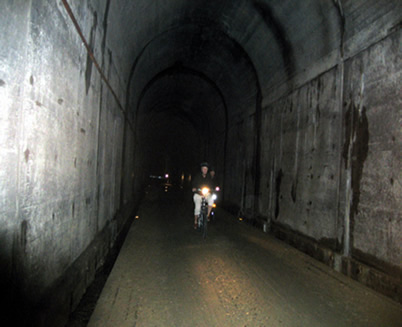 |
||
The St. Paul Pass,
or "Taft" Tunnel opened for trail traffic on June 23, 2001. It connects Idaho
and Montana. The trail through the tunnel is completely flat. |
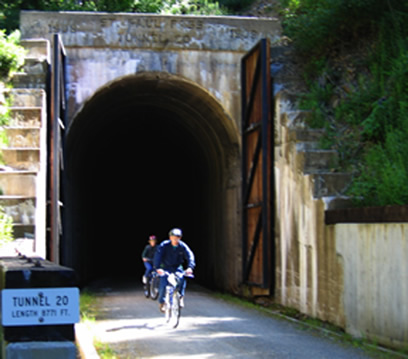 |
||
The ride from East Portal to Pearson, currently the end of the
trail, is 15 miles and is a very gentle downhill ride all the way. It descends
about 1,000 feet of elevation. You can ride back to East Portal or elect to
ride one of the frequent shuttles back to the end of Taft Tunnel. The shuttles
cannon traverse the tunnel, so you must bike the last two miles to the East
Portal parking. |
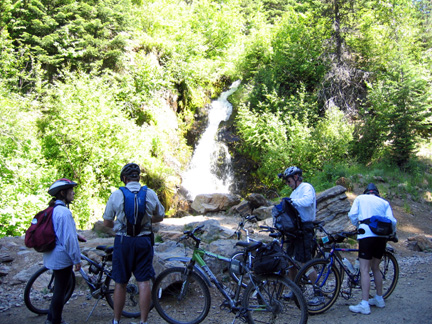 |
||
There can be 200-250
riders on weekdays and 300-400 on weekends. The Saturday of last Labor Day weekend
saw 600 riders on the trail. |
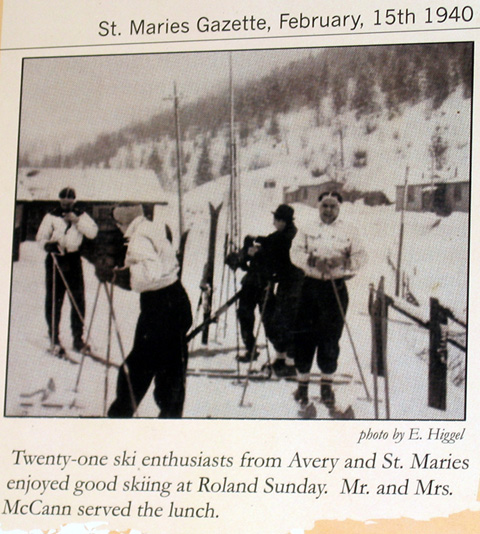 |
||
Skiers used to ride the train to their favorite hike-in
ski area. |
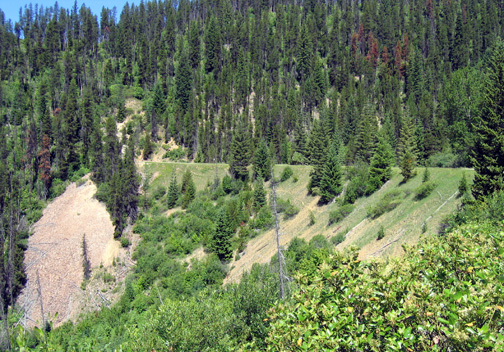 |
||
Some of the trestles were filled with dirt flushed from the
hillsides above. |
 |
||
Construction of this "Pacific extension" of the Milwaukee Railroad
track and rail bed took from 1906 to 1911. The cost of the project which was
originally estimated at $45 million, but because of the tough conditions it
ended up exceeding $234 million, plus another $23 million to convert to electric
locomotives in 1910 to 1911. Nearly 9,000 men were employed on the project year-round.
The extension continued on to Tacoma, Washington. |
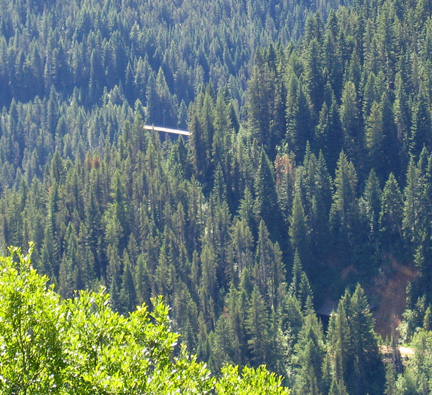 |
||
The Route of the Hiawatha was known as one of the
most scenic train rides in the world. |
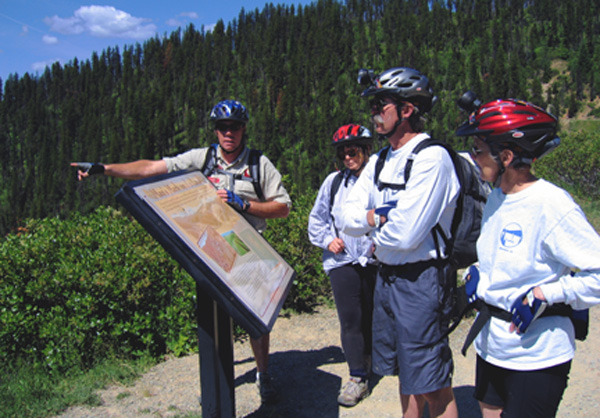 |
||
There is plenty to learn along the way. |
.jpg) |
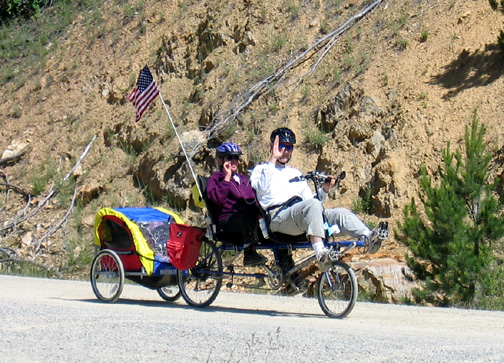 |
The whole
trail is a firm fine gravel/dirt surface. Rental mountain bike tires are inflated
to about 60 psi. As this family demonstrates, everybody can fit on one vehicle. |
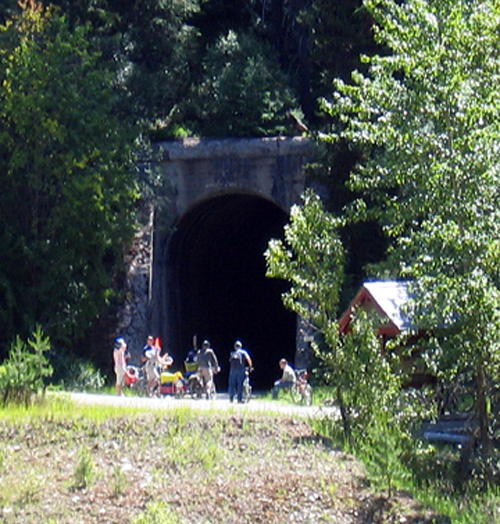 |
||
Another tunnel. |
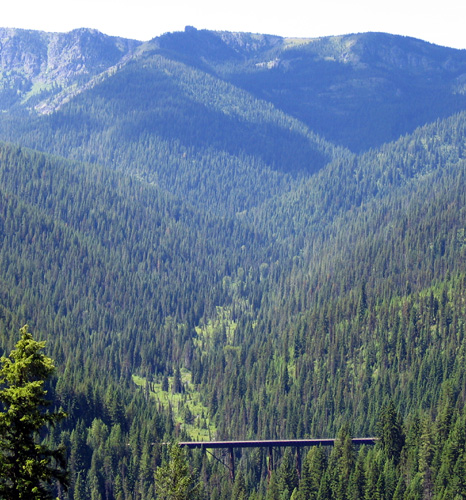 |
||
The last passenger train, the Olympian Hiawatha, passed
through the Bitterroots in 1961. The last freight train west of Butte
passed through in 1980. After that the line was abandoned. |
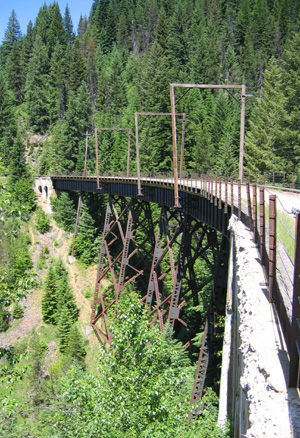 |
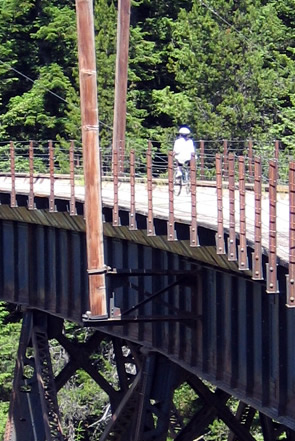 |
You can see the mounts for the electric wires. The Milwarkee
Railroad switched to electric power on a 440-mile section of the line around
1910. |
||
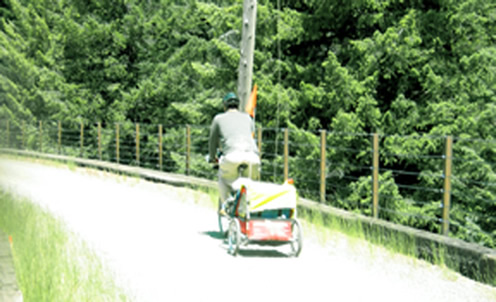 |
||
There are no dogs along
the trail because they're not allowed. Children under age 14 must have adult
supervision. |
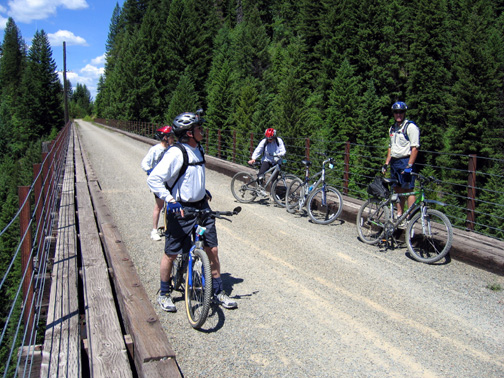 |
||
You can take as long as you want to ride the trail. With the frequent awesome stops, it could take four hours easily. |
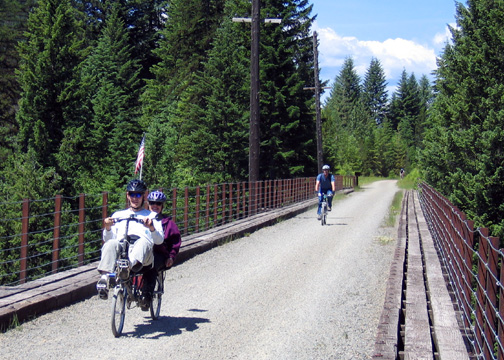 |
As a railroad grade, the trail follows a very easy 1.6 percent
downhill grade from an elevation of 4,160 feet at the West Portal to 3,175 feet
at Pearson, for a total drop of a little less than 1,000 feet in a distance
of 12.7 miles. |
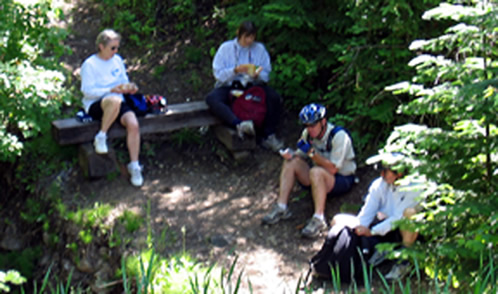 |
||
Riders enjoy a picnic
alongside Manhattan Creek. It's a good idea to pack along a half day's worth
of water and maybe enough food for a picnic. |
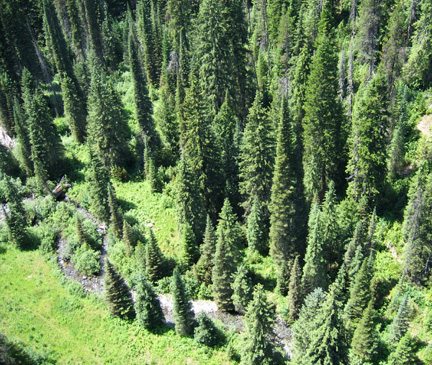 |
 |
The scenery can be breathtaking,
especially from a trestle that is higher than the trees below. |
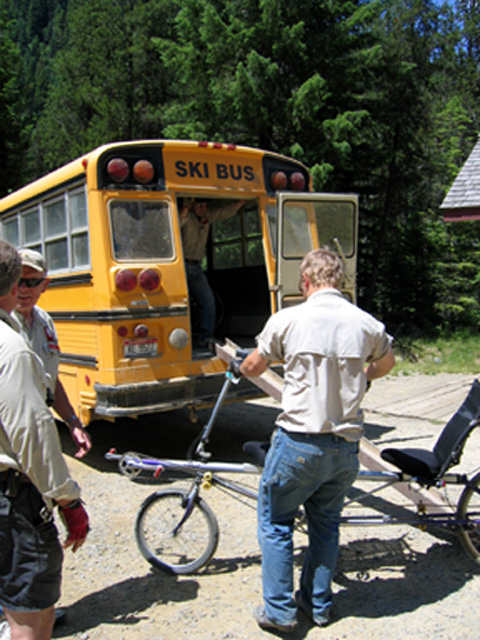 |
||
Ahh, the shuttle that takes you and your bike back to the Taft
Tunnel where the cool air will definitely cool you off. You may want to bring
a jacket along just for riding both directions in the tunnel. |
| If you go: Day use trail fees are $8 for adults and $4 for children ages 3-13. Shuttle bus tickets are $9 for adults and $6 for children. The shuttles run daily 11:00 a.m. - 5:00 p.m., with extended hours on weekends and holidays. The daily shuttle schedule is posted at the trailheads. Tickets are available at the Lookout Pass Ski Area or from trail marshalls. Rentals - bikes, helmets and headlights - are available at the Lookout Pass Ski Area at I-90 Exit 0 at Lookout Pass on the border of Idaho and Montana. Bikes rent for $25 (comfort bike) and $28 (suspension bike) for adults. Children's bikes and trailers rent for $16. All bike rentals include helmets and lights. Separately, helmets are $6 and lights are $4. Both are required on the trail. You can reserve equipment, a good idea on busy days: [email protected] or call 208-744-1301 x 11. The Hiawatha Bike Trail is on U. S. National Forest land administered by the St. Joe Ranger District of the Idaho Panhandle National Forest. It is operated by Lookout Pass Ski Area under a special use permit of the U. S. Forest Service. Websites for the trail are http://www.fs.fed.us/ipnf/rec/activities/biking/Hiawatha and www.ridethehiawatha.com Another 31 miles of trail are planned that will stretch all the way to St. Regis, Montana. The new portion will include one more tunnel and two trestles, and will be for use by bikers, hikers, all terrain vehicles and horses, as well as automobiles. |
||